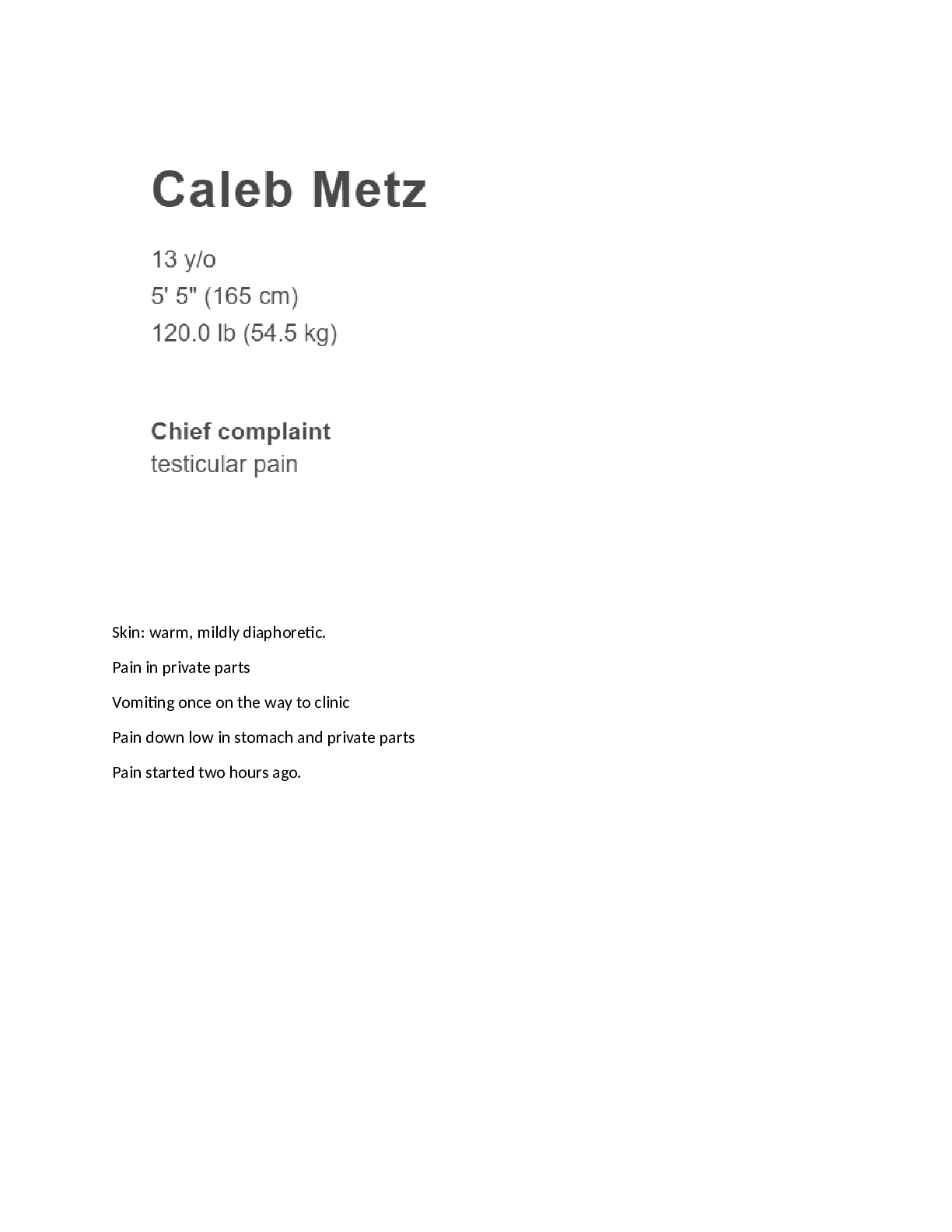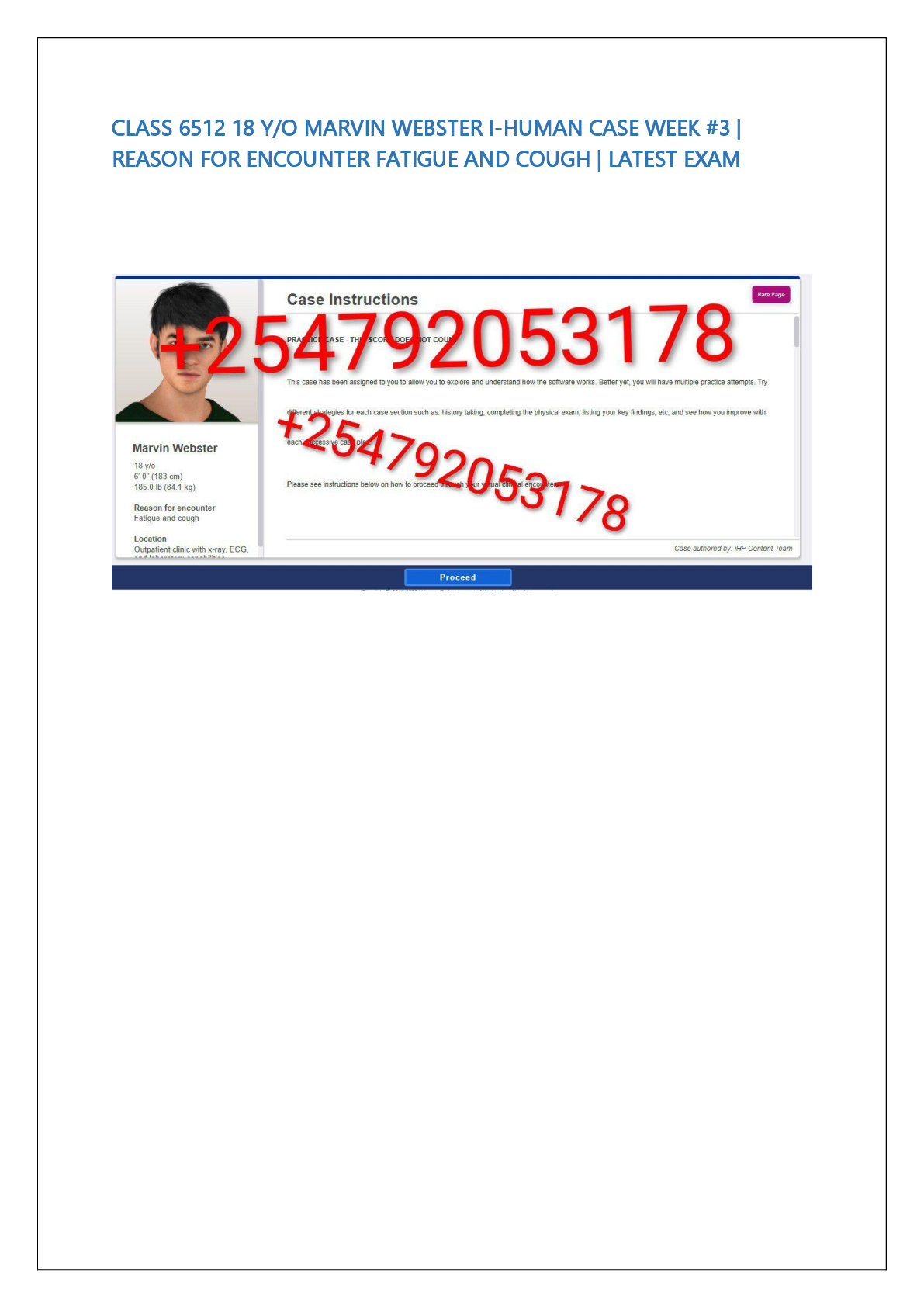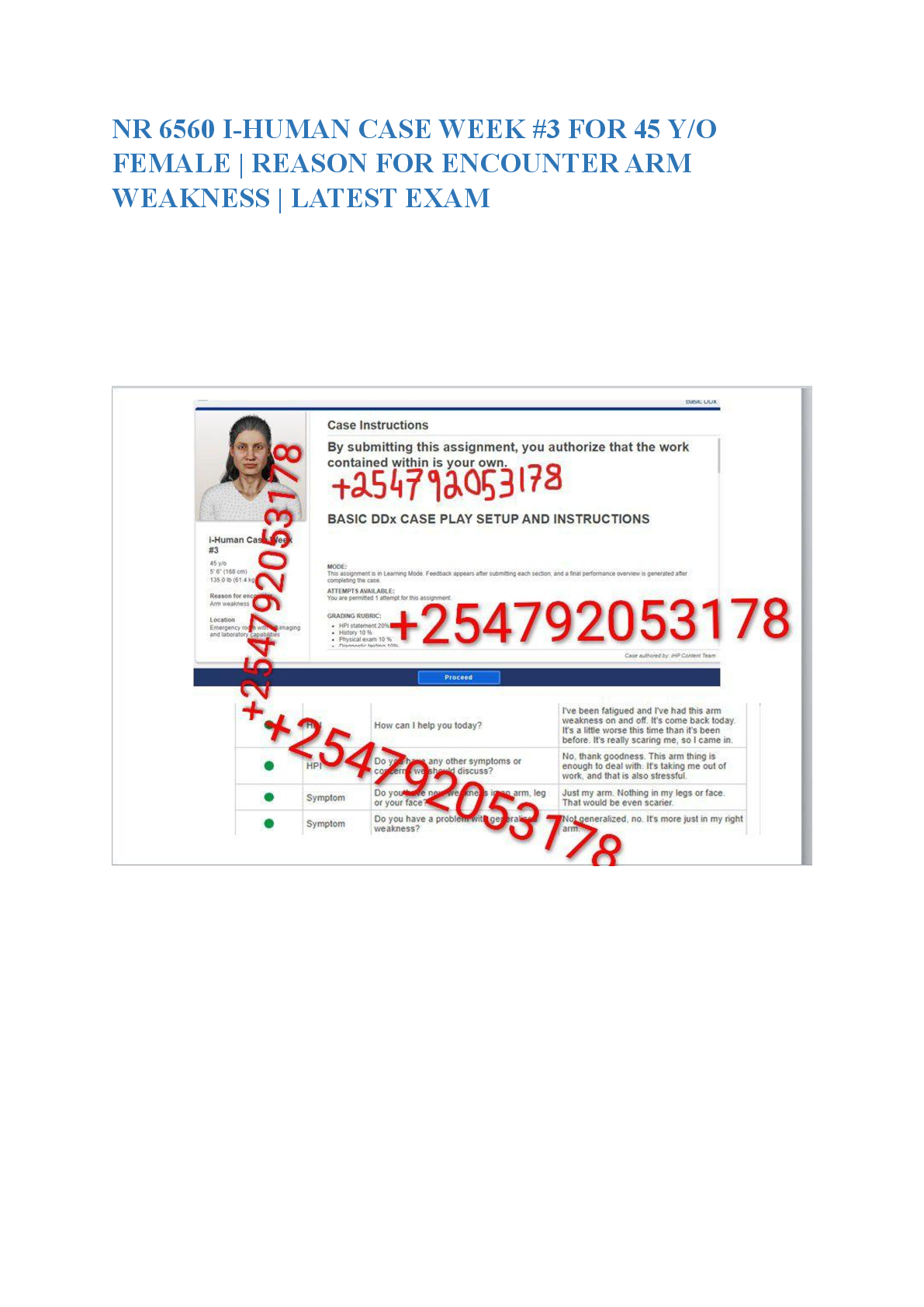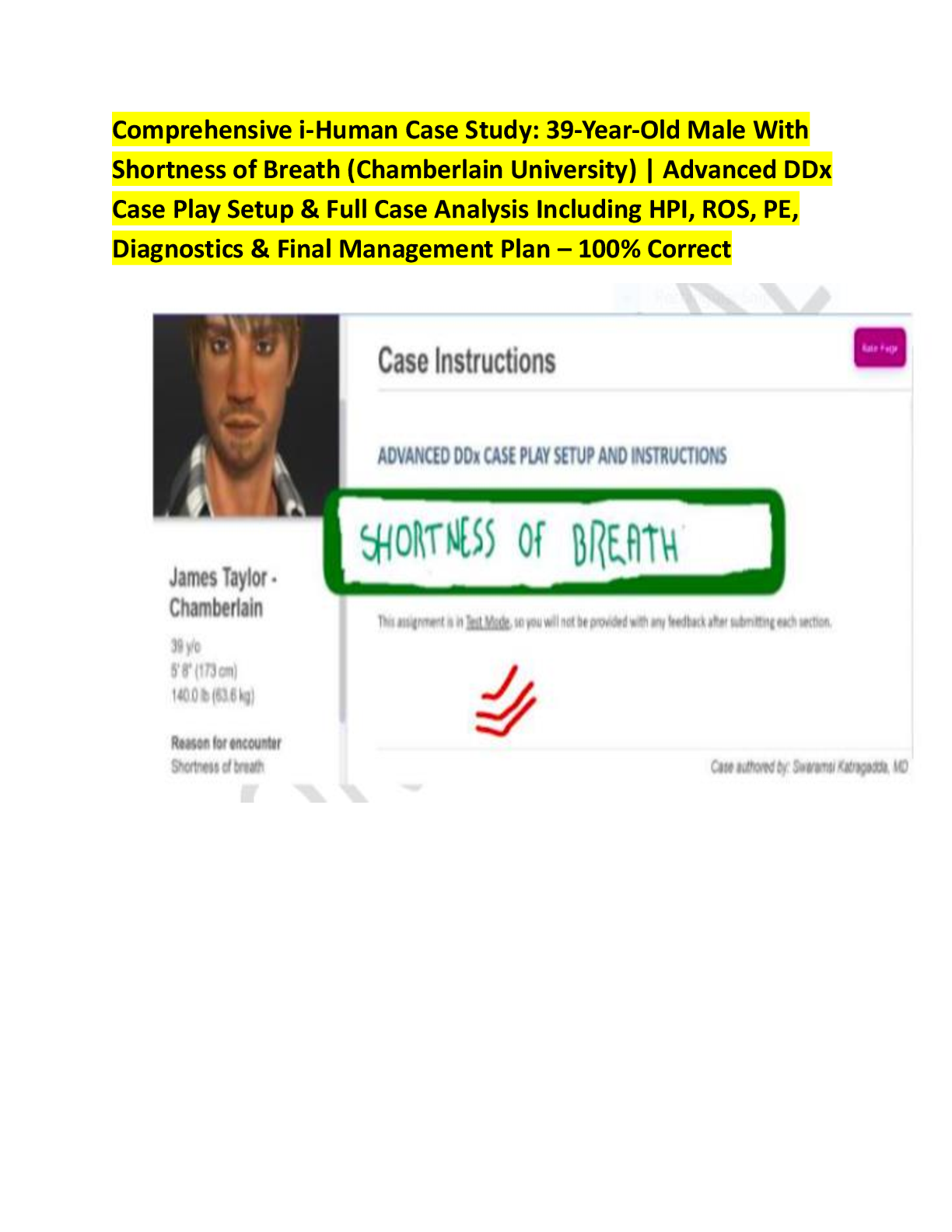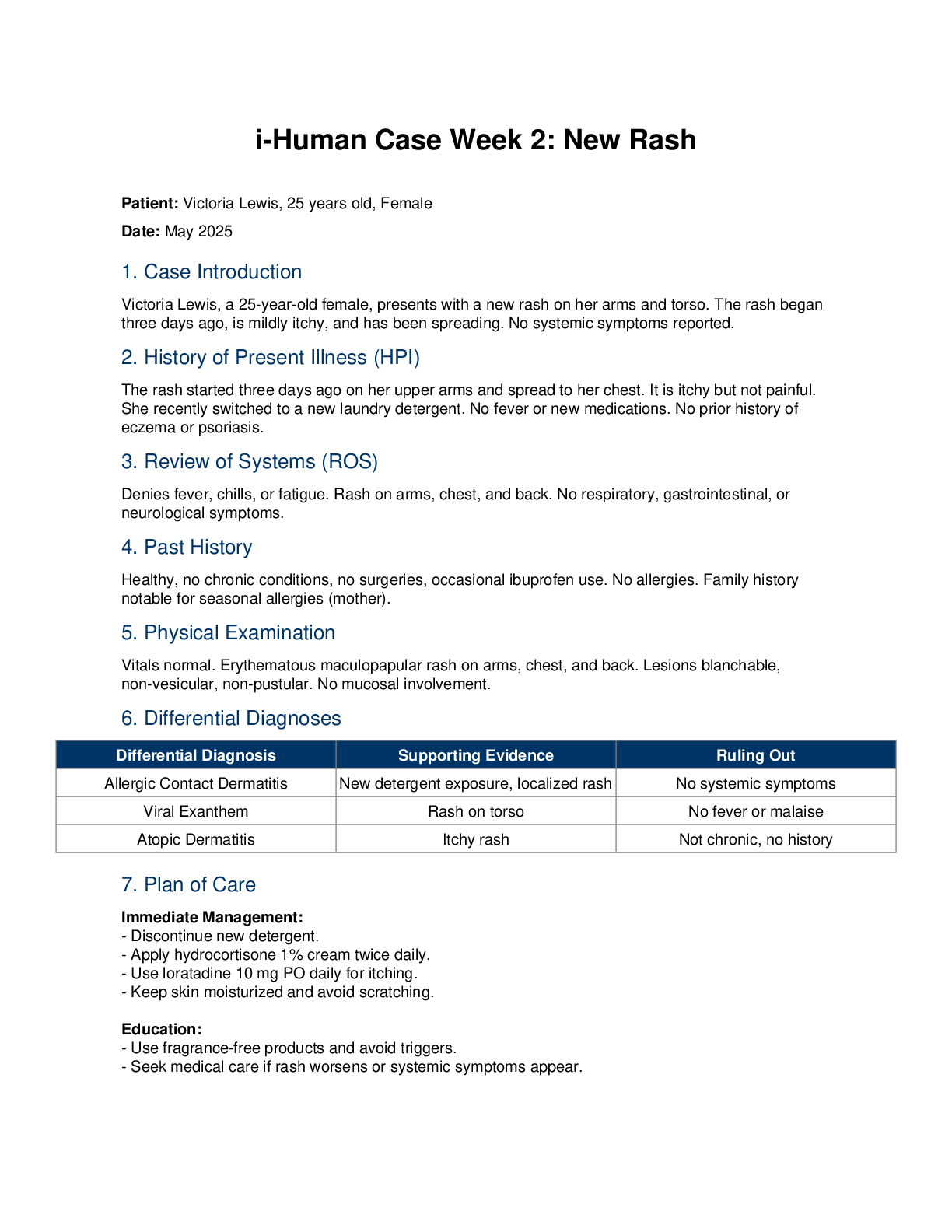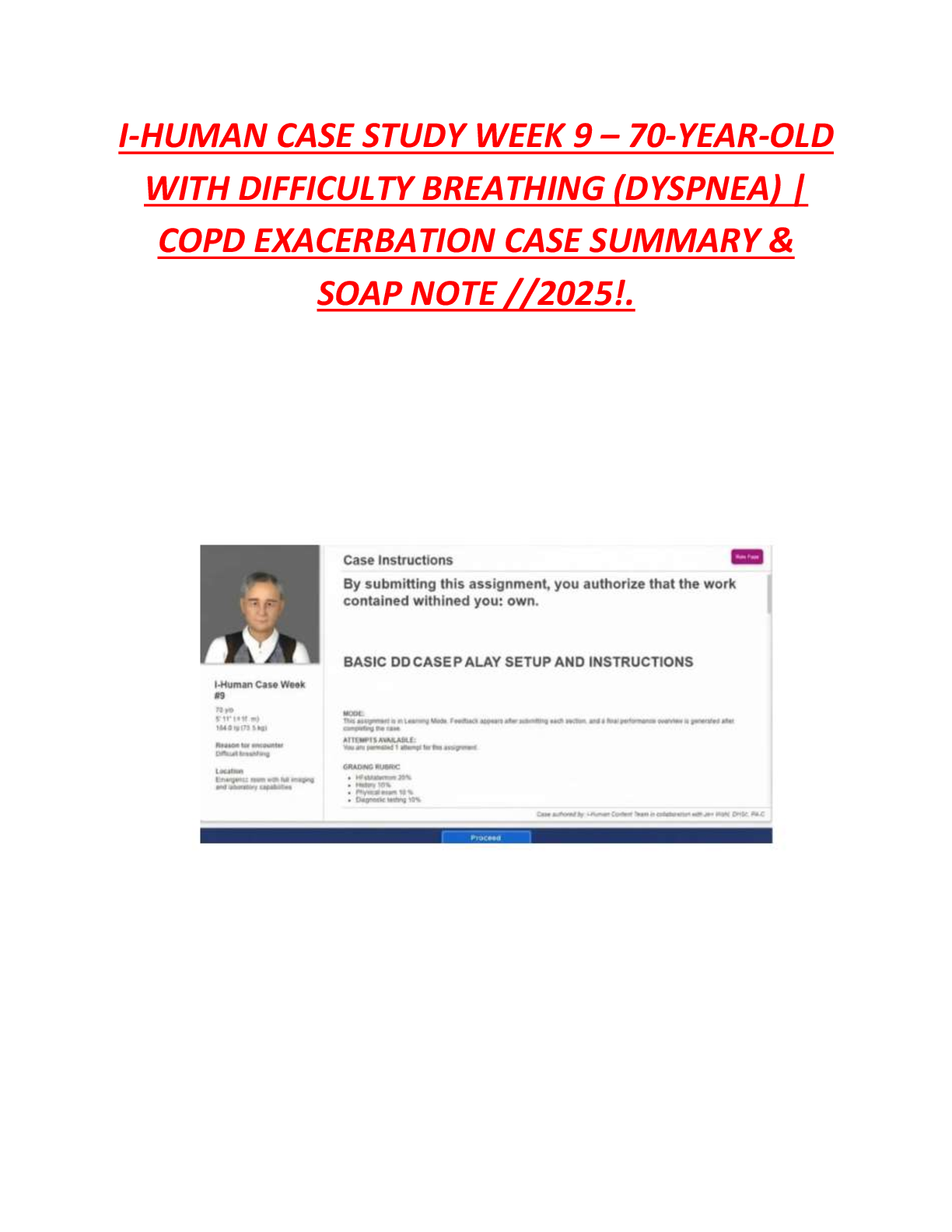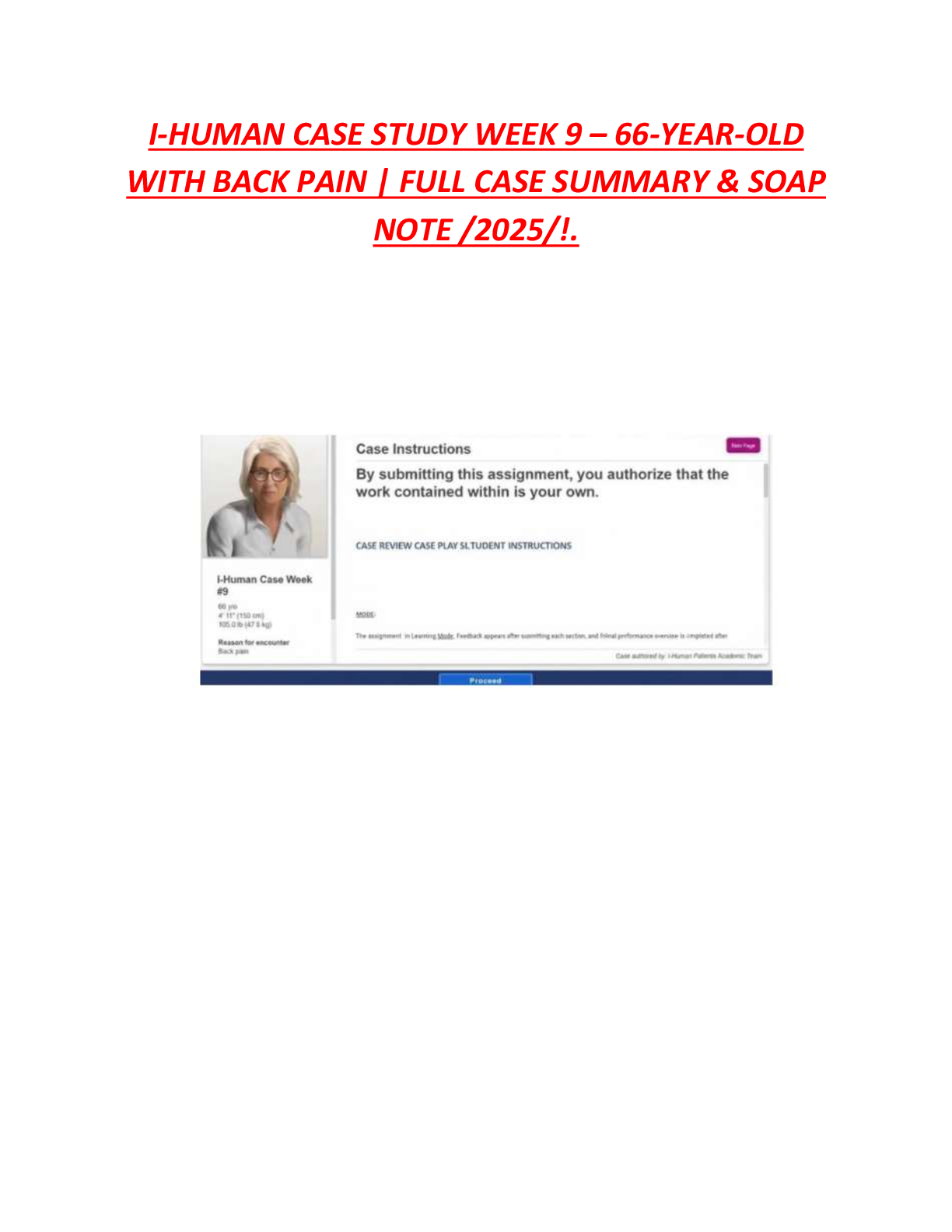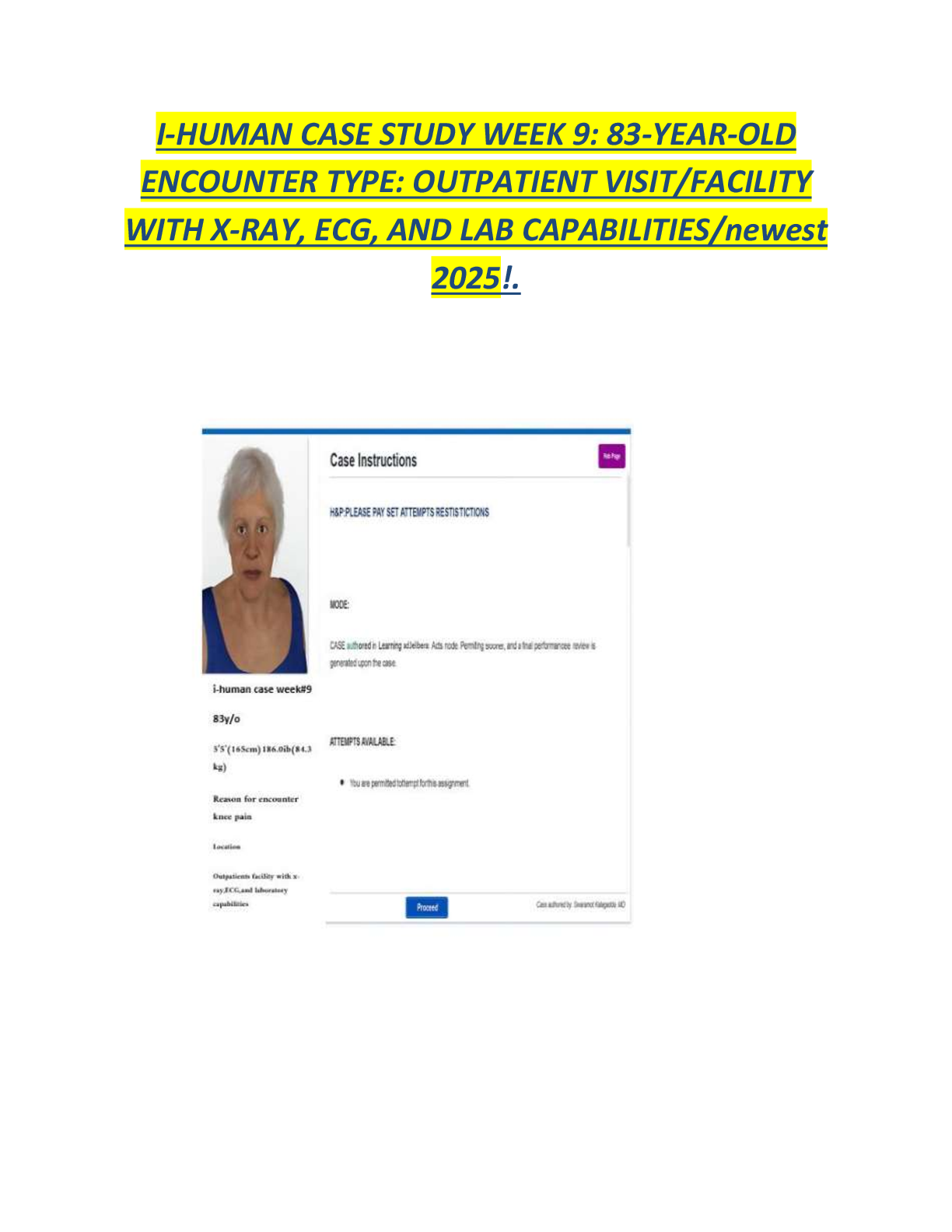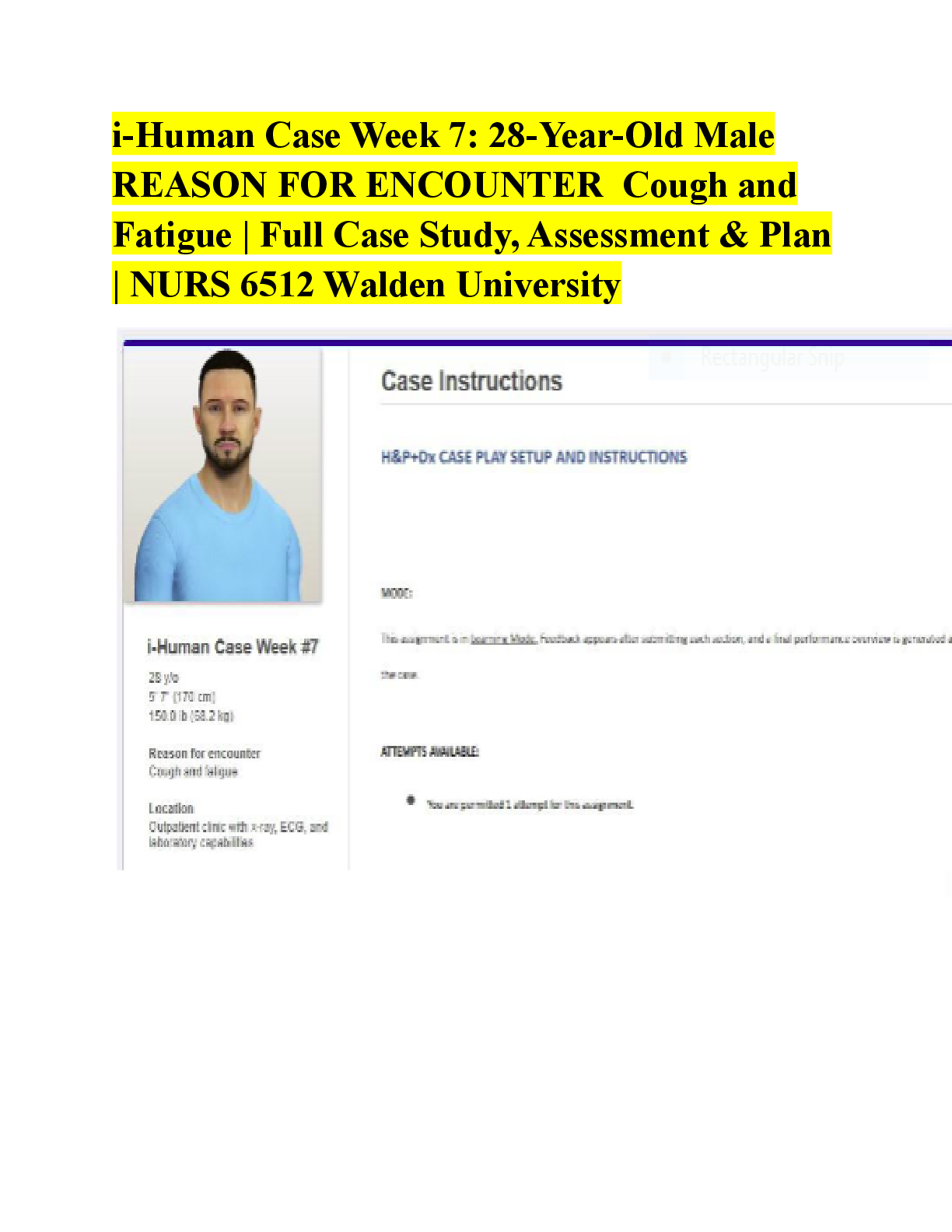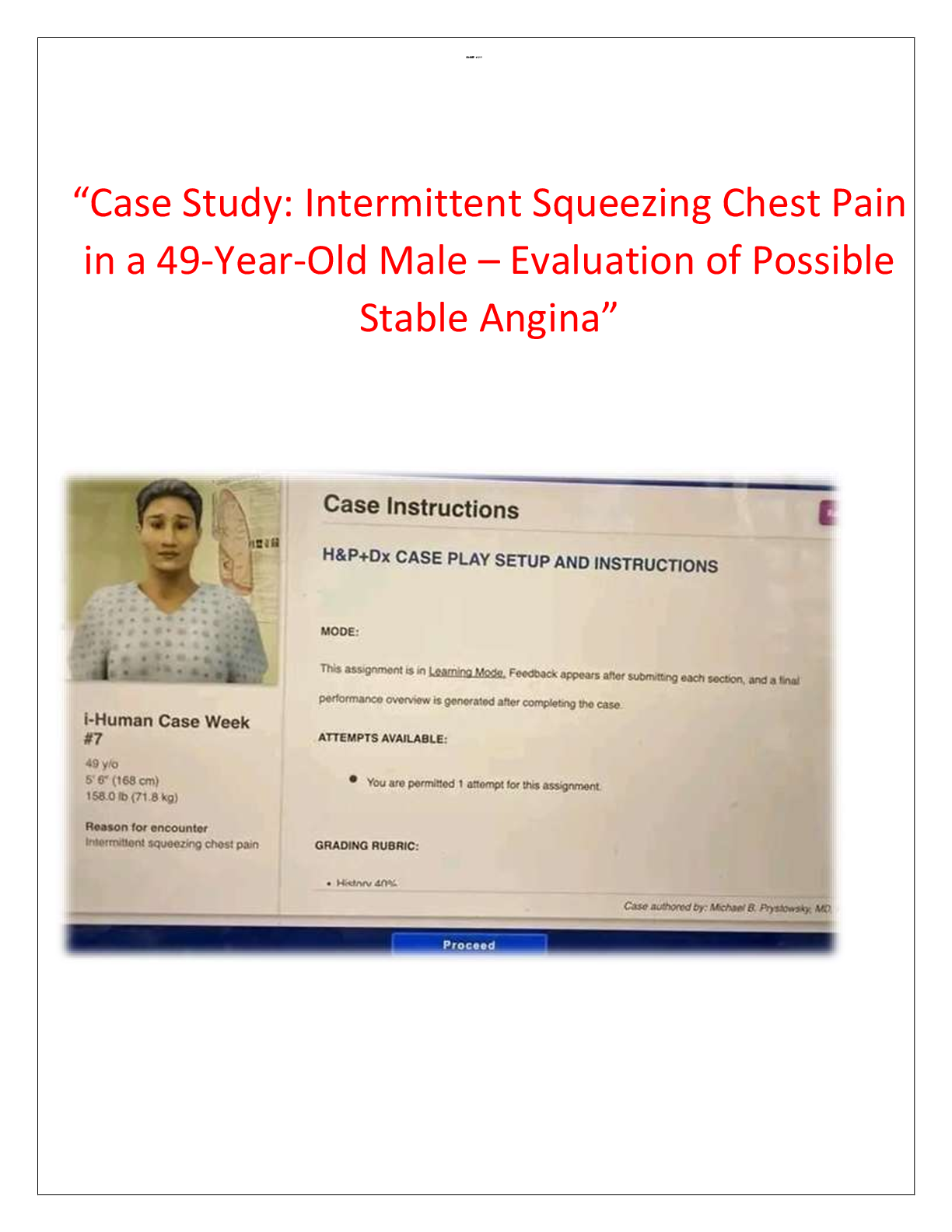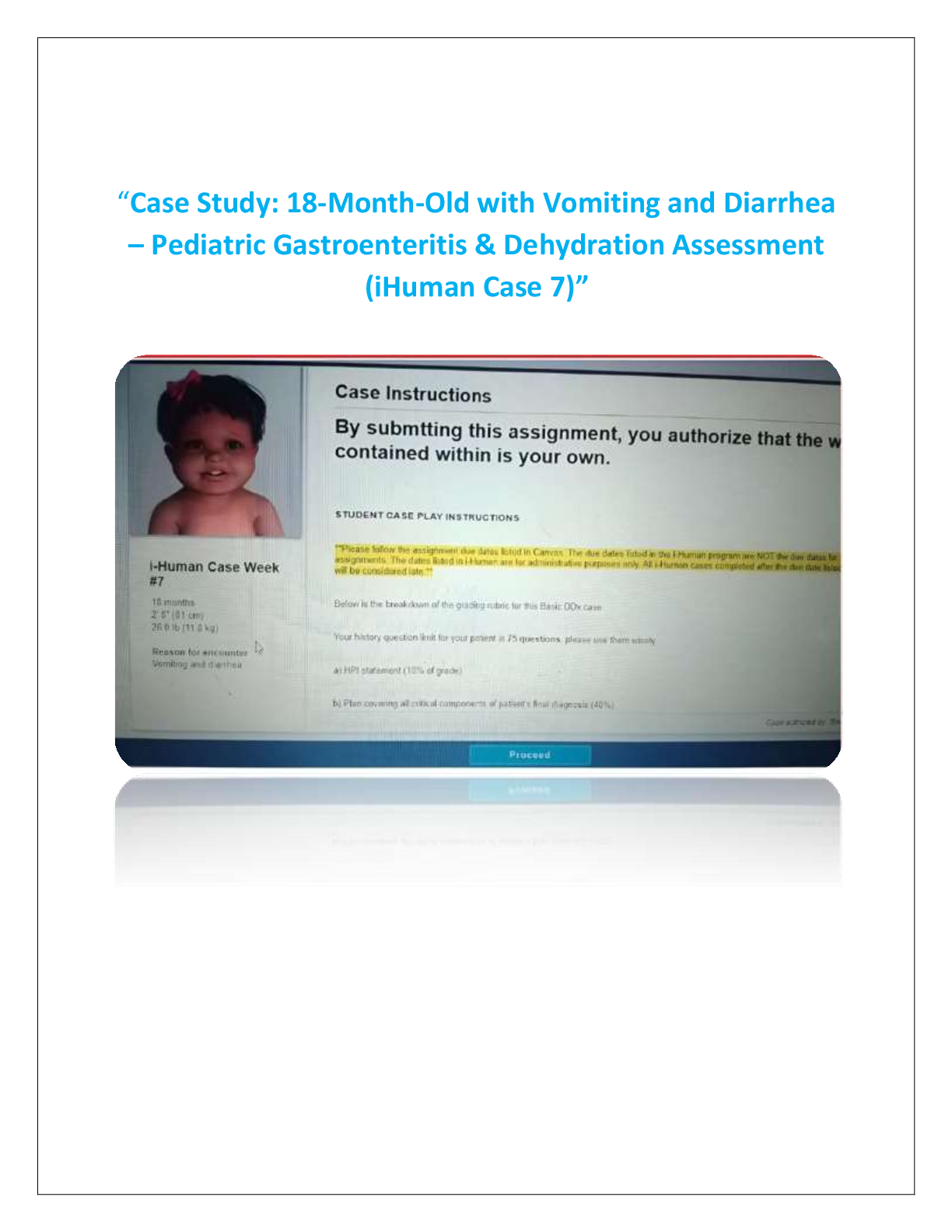*NURSING > CASE STUDY > Case Study 29 COPD Exacerbation > D.Z., a 68-year-old man, is admitted at 1600 to a medical floor wi (All)
Case Study 29 COPD Exacerbation > D.Z., a 68-year-old man, is admitted at 1600 to a medical floor with a diagnosis of acute exacerbation of chronic obstructive pulmonary disease (COPD).(answered)
Document Content and Description Below
Case Study 29 COPD Exacerbation D.Z., a 68-year-old man, is admitted at 1600 to a medical floor with a diagnosis of acute exacerbation of chronic obstructive pulmonary disease (COPD). His other past ... medical history includes hypertension and type 2 diabetes. He has had pneumonia yearly for the past 3 years and has been a two-pack-a-day smoker for 38 years. His current medications include enalapril (Vasotec), hydrochlorothiazide (HCTZ), metformin (Glucophage), and fluticasone/salmeterol (Advair). He appears a cachectic man who is experiencing difficulty breathing at rest. D.Z. seems irritable and anxious; he complains of sleeping poorly and states that lately he feels tired most of the time. He reports cough productive of thick yellow- green sputum. You auscultate decreased breath sounds, expiratory wheezes, and coarse crackles in both lower lobes anteriorly and posteriorly. His vital signs (VS) are 162/84, 124, 36, 102° F (38.9° C), and Spo2 88%. 1. Are D.Z.'s VS and Spo2 acceptable? If not, explain why. 2. Describe a plan for implementing these physician's orders. 3. What is the primary nursing goal at this time? 4. Based on this priority, identify three independent nursing actions you would implement. 5. Identify three expected outcomes for D.Z. as a result of your interventions. 6. Indicate the expected outcome for D.Z. that is associated with each medication he is receiving. 7. Because D.Z. is on azithromycin (Zithromax), what interventions need to be included in his plan of care? Select all that apply. a. Monitor intravenous (IV) site for inflammation or extravasation. b. Assess liver function study results and bilirubin levels. c. Request a hearing test before initiating therapy. d. Carefully dilute the medication in the proper amount of solution. e. Place D.Z. on intake and output. f. Administer the medication over 30 minutes. 8. D.Z is ordered heparin 4000 units subcutaneous q12h. The following vial is available. How many milliliters will D.Z. receive? 9. What are two common side effects of bronchodilators that you need to assess for? 10. ou deliver D.Z.'s dietary tray, and he comments on how hungry he is. As you leave the room, he is rapidly consuming the mashed potatoes. When you pick up the tray, you notice that he has not touched anything else. When you question him, he states, “I don't understand it. I can be so hungry, but when I start to eat, I have trouble breathing and I have to stop.” One theory for the increased work of breathing is based on carbohydrate (CHO) loading. Explain this phenomenon. 11. Identify four interventions that might improve his caloric intake. 12. You notice a box of dark chocolate on D.Z.'s overbed table. He tells you that his wife brought him those because he always wakes at night and eats four or five pieces. What is thought to be the basis for this craving for chocolate? 13. After speaking with D.Z. about his diet and reviewing his medications, you are now concerned about his glycemic control. Hospital policy allows you to obtain as-needed blood glucose levels for diabetic patients, so you direct the nursing assistive personnel (NAP) to obtain D.Z.'s blood glucose level at 2100. What is your responsibility in delegating this task to the NAP? 14. The NAP reports that D.Z.'s blood glucose level is 366 mg/dL. What action do you need to take and why? The nurse should administer insulin to lower the blood glucose levels 15. What other health care professional would probably be involved in D.Z.'s treatments and how? Case Study Progress The next morning, D.Z. is sitting in the bedside chair and appears to be experiencing less difficulty breathing. He states his cough remains productive of yellow-green sputum, although it is “easier to cough up” than it was the previous day. You auscultate decreased breath sounds and a few coarse crackles in both lower lobes posteriorly. His VS are 150/78, 94, 24, 99.7° F (37.6° C). His Spo2 is 92% with oxygen on at 2 L per nasal cannula. 16. Interpret D.Z.'s ABG values. 17. Has D.Z.'s status improved or not? Defend your response. 18. What interventions would you include in your plan of care for D.Z. today? Case Study Progress D.Z.'s wife approaches you in the hallway and says, “I don't know what to do. My husband used to be so active before he retired 6 months ago. Since then he's lost 35 pounds. He is afraid to take a bath, and it takes him hours to dress—that's if he gets dressed at all. He has gone downhill so fast that it scares me. He's afraid to do anything for himself. He wants me in the room with him all the time, but if I try to talk with him, he snarls and does things to irritate me. I have to keep working. His medical bills are draining all of our savings, and I have to be able to support myself when he's gone. Sometimes I go to work just to get away from the house and his constant demands. He calls me several times a day asking me to come home, but I can't go home. You may not think I'm much of a wife, but quite honestly, I don't want to come home anymore. I just don't know what to do." 19. How would you respond to her statement? [Show More]
Last updated: 3 years ago
Preview 1 out of 4 pages

Buy this document to get the full access instantly
Instant Download Access after purchase
Buy NowInstant download
We Accept:

Reviews( 0 )
$15.00
Can't find what you want? Try our AI powered Search
Document information
Connected school, study & course
About the document
Uploaded On
Jul 24, 2021
Number of pages
4
Written in
All
Additional information
This document has been written for:
Uploaded
Jul 24, 2021
Downloads
0
Views
164








